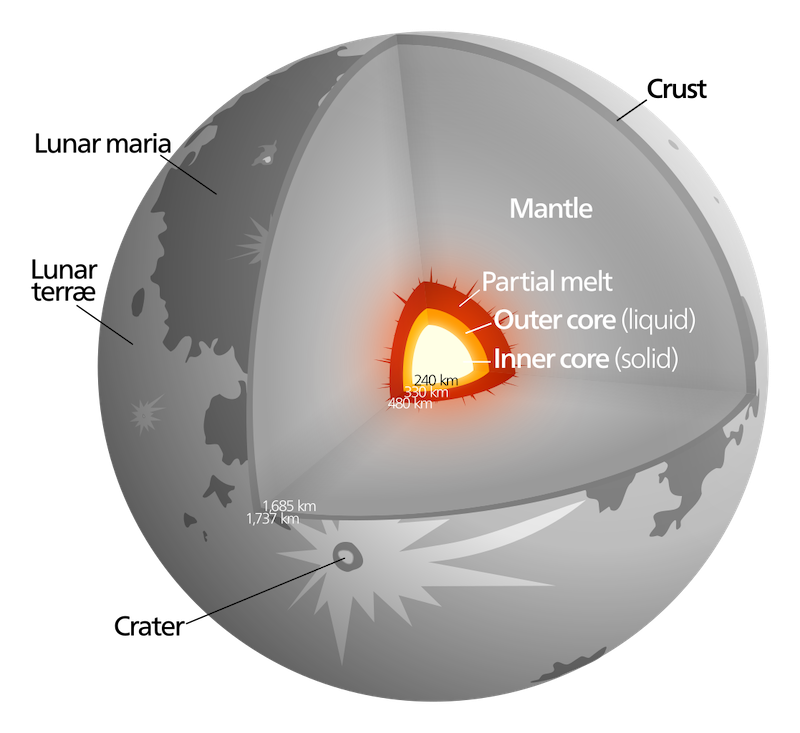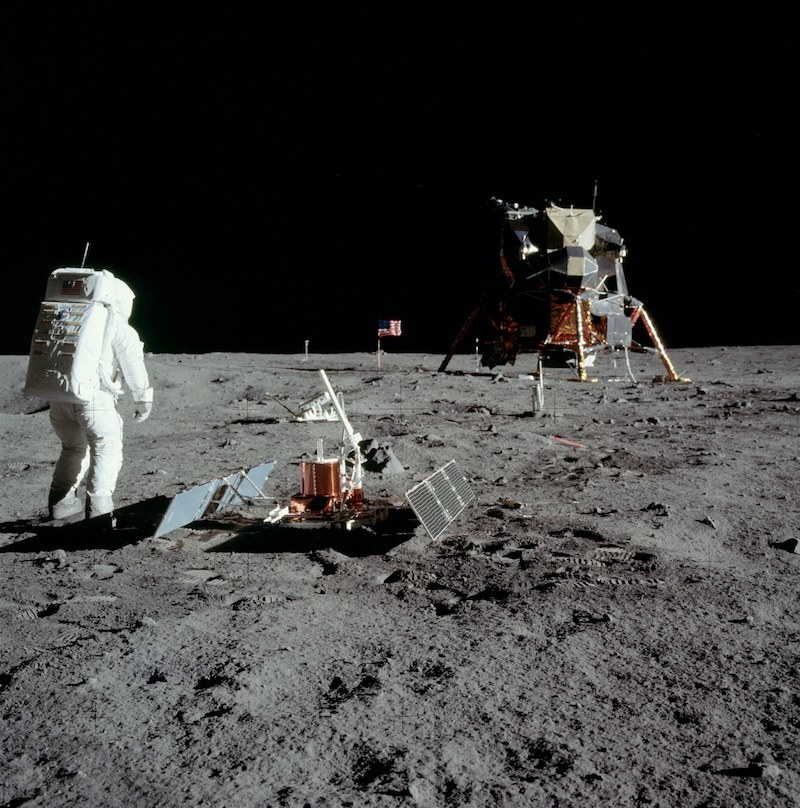
Since the 1960s, humans and robotic landers, rovers and orbiters all have explored the moon. But a puzzle that has concerned scientists is the moon’s inner core. Is it solid or liquid? How large is it? On May 3, 2023, a team of scientists in France announced their answers to those questions. They said that the moon, like Earth, has a solid inner core, about 300 miles (500 km) in diameter.
The researchers published their peer-reviewed conclusions in Nature on May 3, 2023.
Moon’s inner core is solid, like Earth’s
Researchers from several institutions in France – CNRS, Université Côte d’Azur, the Côte d’Azur Observatory, Sorbonne Université and the Paris Observatory-PSL – conducted the new study. The research combined geophysical and geodesic constraints and thermodynamical simulations from various techniques to model and compare different possible internal structures of the moon. This included characteristics such as deformations formed due to gravitational interactions with the Earth, the moon’s distance from Earth and the moon’s density.
The results resolve long-standing questions about the moon’s core, these scientists say. Scientists already knew that the moon has a liquid outer core. But what about its inner core? As it turns out, it is solid, just like Earth’s core. It is about 300 miles (500 km) in diameter, making up approximately 15% of the moon’s overall size. The density of the inner core is approximately 7,822 kilograms per cubic meter. The researchers also re-confirmed the outer core is fluid, and 450 miles (724 km) in diameter.
Because the inner core is relatively small, it was more difficult for scientists to definitively detect it and analyze it.
In 2011, NASA scientists used seismic data from the moon, recorded by Apollo 11 astronauts, to estimate the size of the inner core. They estimated the inner core to be 298 miles (480 km) in diameter, so pretty close to the new findings.
Movement of material in moon’s mantle
The new details about the moon’s core aren’t the only thing that the study has revealed. The analysis also found evidence of movement within the moon’s mantle, between the core and outer crust. Scientists call this movement of material the lunar mantle overturn. Denser material is pulled closer to the core over time, while lighter material is forced upward. Scientists had previously hypothesized that this kind of movement was possible, and now the new study shows that is indeed the case.
The process involves material in the mantle rising up to the surface. This results in volcanic rock deposits in the upper crust. It would also help explain the presence of iron-rich material on the moon’s surface.
Other material, however, would have been too dense to rise upward. This material, instead, sank lower down, to the boundary between the mantle and core.

Moon’s magnetic field
The findings even have implications for the moon’s magnetic field, or rather lack of it. The moon used to have a magnetic field estimated to be 100 times stronger than the one Earth has today. But now, it has almost completely disappeared. The paper said:
Our results question the evolution of the moon magnetic field thanks to its demonstration of the existence of the inner core and support a global mantle overturn scenario that brings substantial insights on the timeline of the lunar bombardment in the first billion years of the solar system.
Interestingly, in 2019, scientists also reported the discovery of an unknown mass of material beneath the moon’s largest crater, the South Pole-Aitken Basin. Scientists don’t yet know exactly what it is, but one likely possibility is the iron-nickel core of an asteroid that lodged into the upper mantle of the moon created the enormous crater during the impact.
Bottom line: Researchers in France say that the moon’s inner core is solid, with a density close to that of iron, solving a long-standing debate about the heart of the moon.











